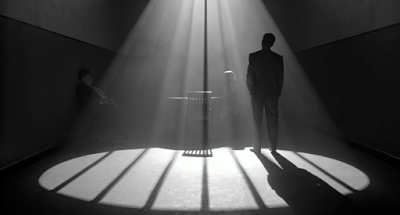Future of Cinematography
Technology has invaded all fields and sectors. Be it Business or Cinema or Politics, Technology has its fair share of how things have changed and advanced. It has not left Cinematography either. Right from the past, when Camera was invented, people who had huge loads of money bought them. When the medium of Cinema was introduced to people, it totally changed the way people saw cameras. New things came up slowly. People started seeing camera as something which is changing their lives and it did.
It’s taken for granted that in the 20th century cinematography survived two revolutions after the introduction of first sound and later color. After these two, Cinema changed rapidly within a short span of time. Technology advancements in general, took the art of film making to a whole new level. Regarding the changes in the cinema language it’s necessary to point out that unlike the technological revolutions these changes have been of an evolutionary nature and related to the one of the most important functions of cinematography as it is: the reflection and analysis of the world community’s lifestyle changes over the course of the 20th century.
The 21st century saw a major change with the introduction of 3D and 4D cinema. When people enjoyed seeing cinema, these two technologies brought a different feel to it enhancing the experience of the audience. Since then, Cinematography has become a lot more complex than what it has been.
The amount of Pre production and Post-production involved in terms of cinematography is huge these days. Though differs from country to country, it has revolutionised and changed the view of cinematographers on a whole. The future of Cinematography has a broad way ahead. Invention of Cameras like ARRI, Red cameras, using medium formats, DIYs etc are about to take the standards to a whole new level.
In terms of Cinematography, it’s obvious that by and large the 3D-technology revolution unfolding before our eyes will only enhance in the near future its influence over the filmmaking process. On the one hand, new opportunities allow film directors realize on the screen the ideas they could hardly dream of before. On the other, such freedom is very often capable of decreasing the level of artistic ambitions of a filmmaker. Motion technology and CG ( computer graphics) is taking the art by storm. The Internet, quality small cameras, personal computers and special software allow almost anyone to display their talents and express their opinions – these are enough to significantly influence the world of cinema.
There are cinematographers who try to innovate new ways to portray things. Earlier, lights were used as just lights whereas today they try exploring with them. Story telling has gone way too far where each frame in a movie adds an uniqueness to the story. Lets wait for the future.
It’s taken for granted that in the 20th century cinematography survived two revolutions after the introduction of first sound and later color. After these two, Cinema changed rapidly within a short span of time. Technology advancements in general, took the art of film making to a whole new level. Regarding the changes in the cinema language it’s necessary to point out that unlike the technological revolutions these changes have been of an evolutionary nature and related to the one of the most important functions of cinematography as it is: the reflection and analysis of the world community’s lifestyle changes over the course of the 20th century.
The 21st century saw a major change with the introduction of 3D and 4D cinema. When people enjoyed seeing cinema, these two technologies brought a different feel to it enhancing the experience of the audience. Since then, Cinematography has become a lot more complex than what it has been.
The amount of Pre production and Post-production involved in terms of cinematography is huge these days. Though differs from country to country, it has revolutionised and changed the view of cinematographers on a whole. The future of Cinematography has a broad way ahead. Invention of Cameras like ARRI, Red cameras, using medium formats, DIYs etc are about to take the standards to a whole new level.
In terms of Cinematography, it’s obvious that by and large the 3D-technology revolution unfolding before our eyes will only enhance in the near future its influence over the filmmaking process. On the one hand, new opportunities allow film directors realize on the screen the ideas they could hardly dream of before. On the other, such freedom is very often capable of decreasing the level of artistic ambitions of a filmmaker. Motion technology and CG ( computer graphics) is taking the art by storm. The Internet, quality small cameras, personal computers and special software allow almost anyone to display their talents and express their opinions – these are enough to significantly influence the world of cinema.
There are cinematographers who try to innovate new ways to portray things. Earlier, lights were used as just lights whereas today they try exploring with them. Story telling has gone way too far where each frame in a movie adds an uniqueness to the story. Lets wait for the future.





Comments
Post a Comment